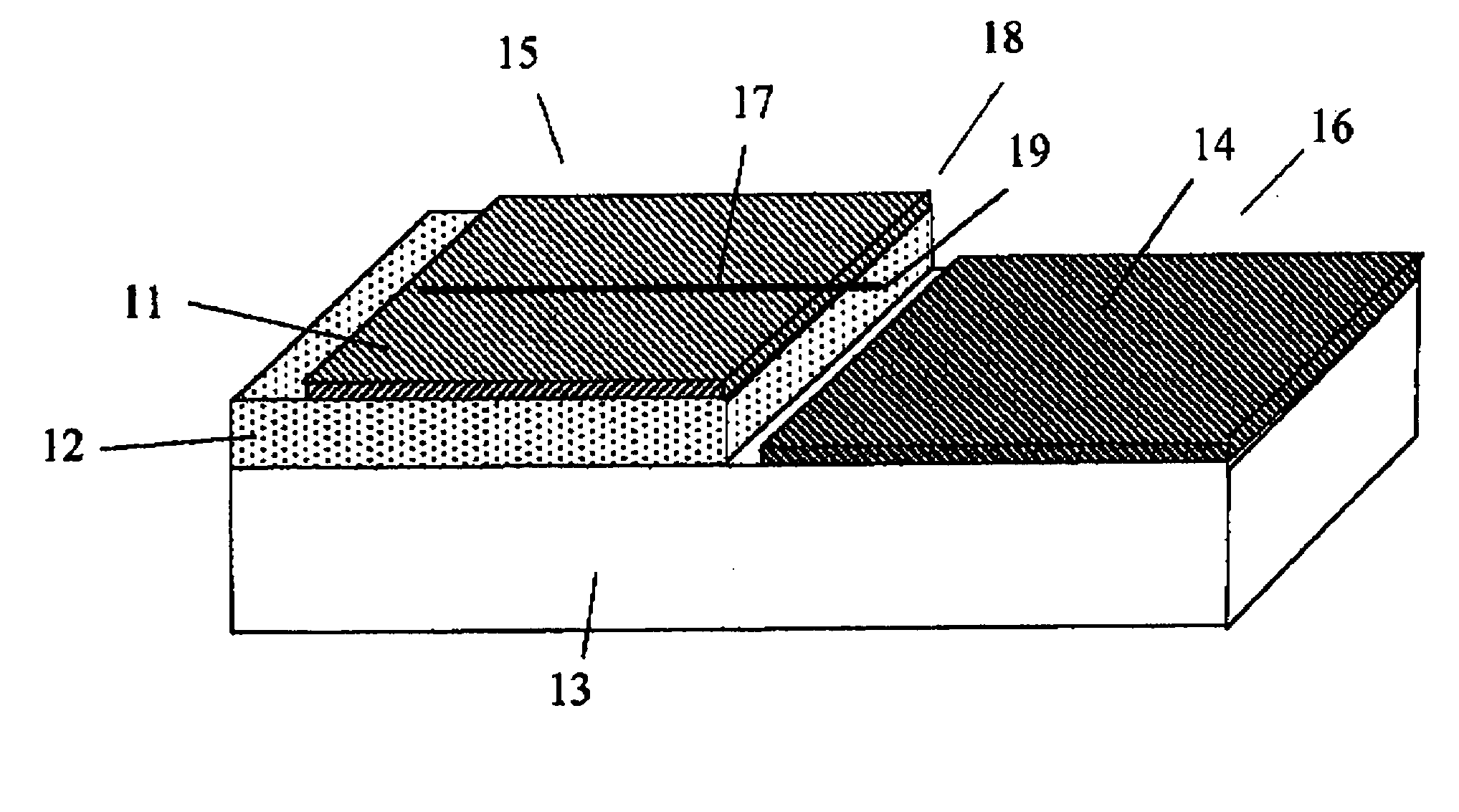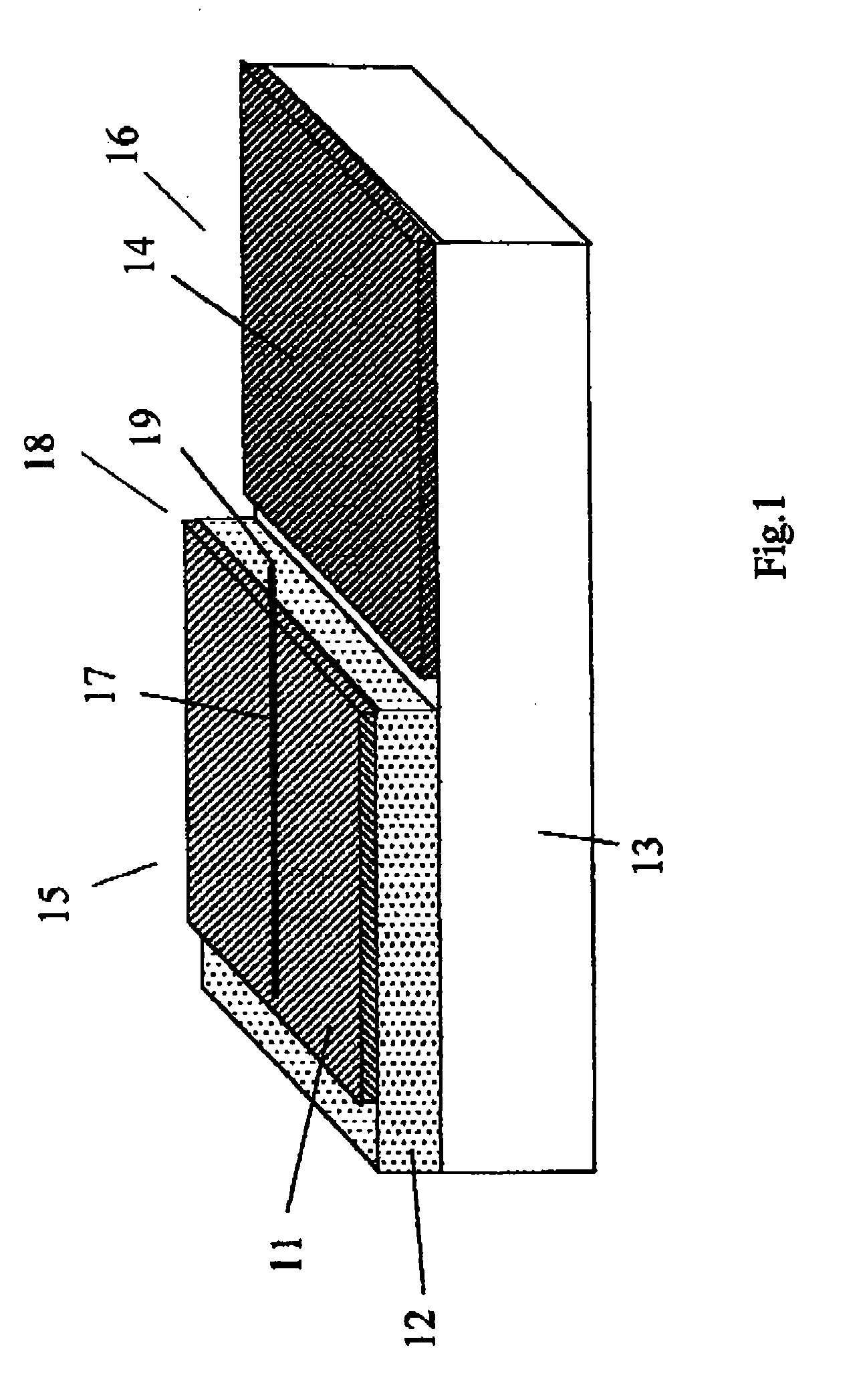Nanotube-based vacuum devices
a vacuum device and nanotube technology, applied in nanoinformatics, electrostatic control tubes, basic electric elements, etc., can solve the problems of complex fabrication techniques, relatively high threshold voltage, and three-dimensional structure, and achieve the effects of increasing the output voltage, increasing the speed of the si-based circuitry, and large temperature range of operation
- Summary
- Abstract
- Description
- Claims
- Application Information
AI Technical Summary
Benefits of technology
Problems solved by technology
Method used
Image
Examples
Embodiment Construction
[0041] The majority of the devices presented, has in common an important feature, namely, extremely short distance between the nanotube tip and the gate electrode (or anode electrode, if the diode is considered) to minimize the control voltage for the device operation. At the same time, the device design allows for low input capacitance. For that purpose, the cathode and the gate electrodes are laterally shed from each other to avoid their overlap, while their planes are separated from each other by the thickness of the dielectric layer. Using self-align method of deposition of the gate electrode (or anode electrode for a diode) next to the cathode electrode, one obtains the cathode-gate (anode) distance essential controlled by the thickness of the dielectric film, which can easily made within a fraction of a micron.
[0042]FIG. 1 illustrates the preferred embodiment of the Diode 1. The conducting film 11 of the cathode electrode 15 is placed on the dielectric film 12 deposited on th...
PUM
 Login to View More
Login to View More Abstract
Description
Claims
Application Information
 Login to View More
Login to View More - R&D
- Intellectual Property
- Life Sciences
- Materials
- Tech Scout
- Unparalleled Data Quality
- Higher Quality Content
- 60% Fewer Hallucinations
Browse by: Latest US Patents, China's latest patents, Technical Efficacy Thesaurus, Application Domain, Technology Topic, Popular Technical Reports.
© 2025 PatSnap. All rights reserved.Legal|Privacy policy|Modern Slavery Act Transparency Statement|Sitemap|About US| Contact US: help@patsnap.com



